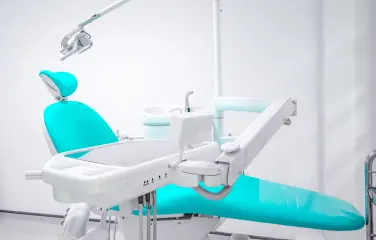A Semi-Comprehensive Guide to Dental Business Terminology 101
If you are a dental entrepreneur, it’s vital to know the ins and outs of dental business terminology. These terminologies can make or break your dental practice, and a lack of understanding can lead to a significant loss in revenue. In this blog post, we will be breaking down everything you need to know when it comes to dental business terminology and how you can evaluate the value of a dental practice or business
The bare bones of purchasing a dental office is this, after deciding location/type of practice, you are buying a business. The basics of business are this, marketing brings people in the door, delivery keeps people coming back, and at the end of the day money out of the bank needs to be less than money into the bank account. For most dental offices you want to spend 50-70 cents on “expenses” for every dollar coming into the office, lets break these down.
To evaluate the value of a dental practice, you first need to understand what is included in business expenses and overhead. Business expenses and overhead are the costs required to operate a business. These expenses can range from the cost of rent, equipment, utilities, salaries, and marketing, among many others. Understanding overhead is crucial, as it can affect the profitability of your dental practice. Be sure to keep track of your expenses to ensure that they are not exceeding your revenue. Simplified look at a bank statement and if an office made 100K in deposits there should only be 50-75K in “expenses”. this means there’s money leftover to pay the “owner” or doctor.
Profitability in a dental business can be calculated by assessing the earnings before interest, taxes, depreciation, and amortization (EBITDA). EBITDA is a measure of a company’s overall financial performance. This measure will help you to determine how much profit your dental practice generates and if it is enough to cover overhead costs. A negative EBITDA means that your practice is losing money, while a positive EBITDA means that your practice is profitable. This term simplified means if an office takes in 100 dollars, let’s say 55 cents goes to “expenses” and 30 cents goes towards paying the doctor who did the dentistry. That would mean there’s 15 cents of “profit” or “EBITDA” leftover for the owner who get this as a trade for the risk of owning a business + business loan.
Determining the pay of a dentist can be a bit complicated as many sources of income can vary from practice to practice. A general method of determining pay is based on a percentage of revenues generated by a dentist. This percentage varies but typically ranges from 25% to 40%. After determining how much of your revenue is going towards your dentist’s pay, you can subtract that from your EBITDA, which will give you a clear understanding of your practice’s true profitability as described above.
Understanding dental business terminology can give you a competitive edge when it comes to assessing the value of a dental practice. It is essential to have a good understanding of the terminology to ensure that your practice is operating at peak performance. Some useful tools for dental entrepreneurs include practice management software, which provides metrics for your practice, helping you to monitor its performance closely.
In conclusion, having a solid understanding of dental business terminology can help you to evaluate not only your dental practice but other dental practices in your area. Understanding these terms is crucial to understanding the profitability of your practice and maintaining its success. By keeping track of your overhead costs, calculating your EBITDA, understanding how much your dentist pays, and subtracting it from your EBITDA, you can determine the true profitability of your dental business. Remember, utilizing practice management software and monitoring your metrics closely will greatly benefit your dental practice.



